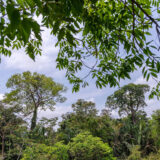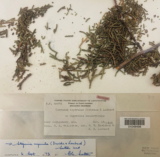Accelerating Collections-Based Discovery
NYBG’s Steere Herbarium is adopting machine learning tools to accelerate the transcription and databasing of specimen labels, addressing a significant bottleneck in digitizing collections. By implementing tools such as VoucherVision, we hope to double the rate of label transcription, unlocking data from thousands of specimens to support global research and conservation efforts. We are also exploring AI applications for measuring and analyzing plant traits, such as leaf morphology and flowering time, from herbarium specimens, to enhance understanding of plant ecology and evolution. These advances contribute to more efficient data processing and open new avenues for research and discovery.






